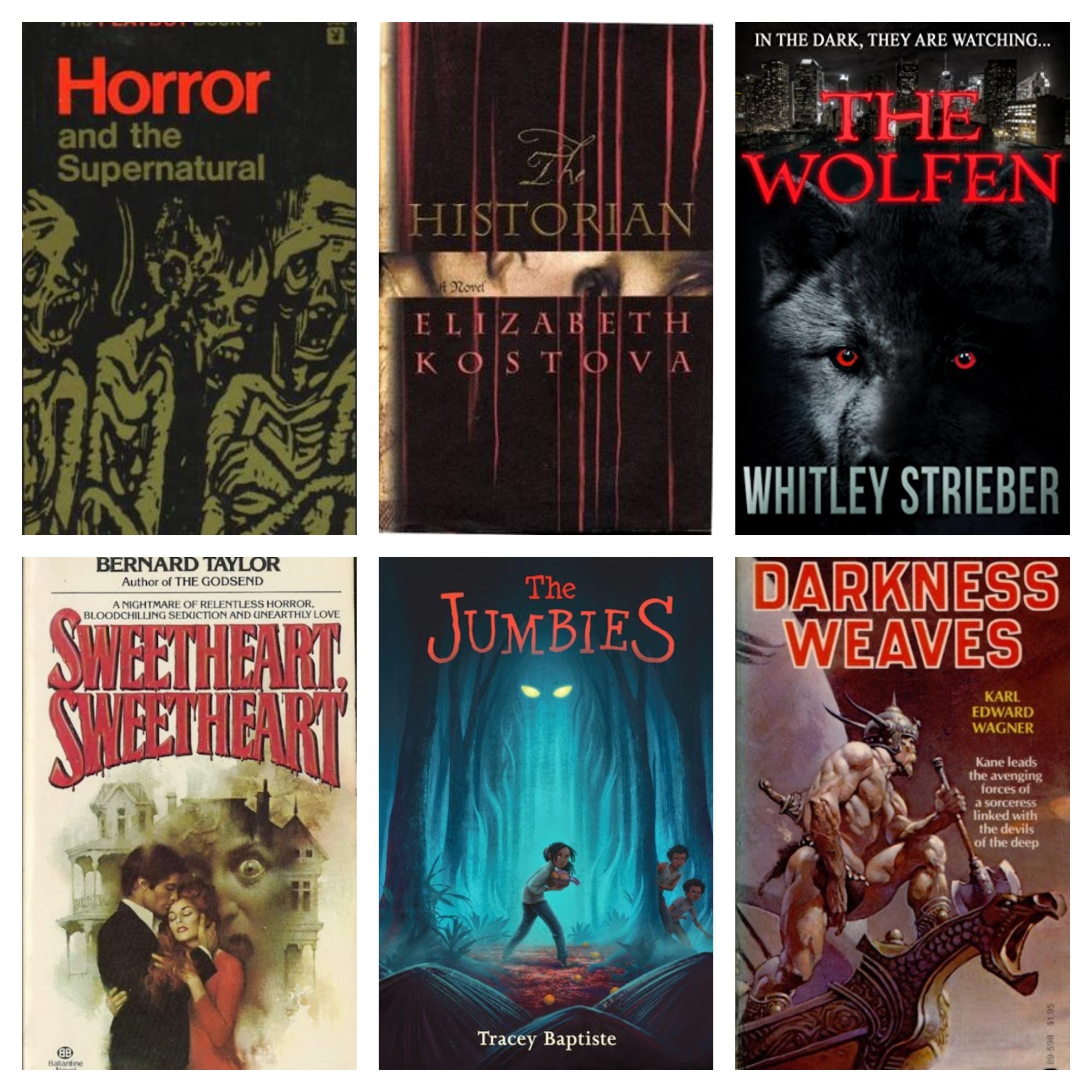As the year winds its way down and night encroaches upon our empty lives earlier and earlier, horror encases the soul like a salve to soothe the jagged edges of the frizzled psyche during these dark months. Naturally I have arrived to bring you more write-ups from this big ass horror list project I’ve been digging into. In this batch, we’ve an athropological vampire tale, a collection of spooky stories from the master of the saucy, a pair of YA novels of Caribbean folklore, a classic twist on the werewolf mythos, a haunting love story of creeping dread and a savage and brutal ode to barbarism and dark magic.
For those just joining me, this is my journey through the following “Best of” Horror lists:
Reedsy Discovery Best Horror Books
Stephen Jones & Kim Newman’s Horror: 100 Best Books
Stephen Jones & Kim Newman Horror: Another 100 Books
If you want to check out my previous entries, they can be found here:
Part 39 | Part 38 | Part 37 | Part 36 | Part 35 | Part 34 | Part 33 | Part 32 | Part 31 | Part 30 | Part 29 | Part 28 | Part 27 | Part 26 | Part 25 | Part 24 | Part 23 | Part 22 | Part 21 | Part 20 | Part 19 | Part 18 | Part 17 | Part 16 | Part 15 | Part 14 | Part 13 | Part 12 | Part 11 | Part 10 | Part 9 | Part 8 | Part 7 | Part 6 |Part 5 | Part 4 | Part 3 | Part 2 | Part 1
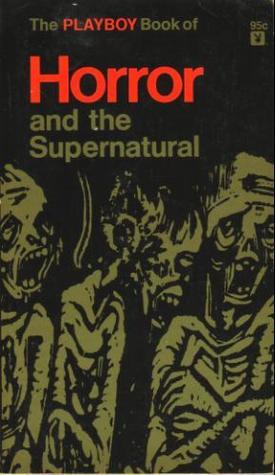
The Playboy Book of Horror and the Supernatural (Edited by Ray Russell, 1967)
List: Jones/Newman
For those not in the “know”, at one time people actually did read Playboy for the articles. In particular it was known for laying claim to quite a few stellar stories from some of the industry’s finest authors much of which was genre fiction. As such, it’s no surprise that a collection of some of the best horror published in Playboy in the ’50s and ’60s would end up on a best horror list. Edited by author Ray Russell who contributed the excellent gothic horror stories “Sardonicus” (adapted into a film starring Vincent Price and directed by William Castle) and “Comet Wine”, this collection is generally quite strong. While it does return to the Faustian and “You’re actually in Hell” wells a few too many times, many of the stories are damned clever and well worth checking out. Not surprisingly, Richard Matheson’s offerings “First Anniversary” and “No Such Thing as a Vampire” are great pulpy fun and another Twilight Zone writer Charles Beaumont turns in a couple of good stories too, particularly the cool jazzy ghost story “Black Country”. Another of my favorite authors, Ray Bradbury, also has two stories in here. Interestingly they are some of the least overtly horror in the collection. “Heavy-Set” in particular is more of a disturbing character study with no supernatural touches to it. The two short stories from regular illustrator of Playboy Gahan Wilson (“The Manuscript of Dr. Arness” and “The Sea was Wet as Wet as Could Be”) were also fun punchy tales with Wilson’s penchant for dark humor. Fredric Brown’s “Nasty” fits into this category too. Interestingly both of Robert Bloch’s entries (“Beelzebub” and “The Traveling Salesman”) deal in madness and hallucinations, echoing his work on Psycho. Some of the stories here just feel a bit predictable and uninspired though. “Double Exposure” by John Reese is one of the less remarkable ones. It has an interesting setup but the ending could be seen coming from a mile away, and it didn’t really make much sense to me. Still overall, I quite liked this collection. I may actually try to track down its companion anthologies, The Playboy Book of Science Fiction and Fantasy and Playboy’s Stories of the Sinister & Strange, both edited by Ray Russell as well and featuring many of the same authors.
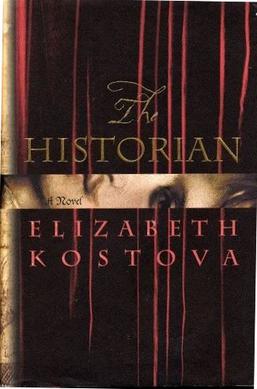
The Historian (Elizabeth Kostova, 2005)
List: Reedsy Discovery
When the narrator, a young woman, discovers a very old book emblazoned with a woodcut of a dragon across it, she asks her father Paul about it. This triggers the first of nested narratives as Paul recounts his history with the book and what led him on a search for his colleague and advisor Professor Rossi that sets him and a mysterious woman named Helen on a globe-trotting quest to find the missing professor and the secret of Vlad Țepeș’ hidden tomb and their pursuit by bloodsucking fiends. Along the way Paul and Helen continually come across both friend and foe who are familiar with different pieces of the overall puzzle. In the middle of his story, Paul leaves his daughter to go in search of Helen and Dracula’s final resting place leaving behind extensive notes detailing the remainder of the story. From this point we go back and forth between the narrator’s journey to find her father and her father Paul’s journey to find his missing mentor Rossi with occasional even further nestings within this to reveal even more character back story and detail such as the letters Rossi left behind and ancient letters written by monks traveling between Instanbul, Budapest and beyond.
If you haven’t gathered by the above description, The Historian is not what I would call a quick and breezy read. It’s a dense, multi-layered novel full of rich history and intrigue with touches of menace and eerie suspicion along the way. The novel takes its time unfolding the sprawling plot but remains quite engaging for the vast majority of the time. I am normally not the biggest history buff and yet I found the book’s various digressions and elaborations on the background of the Balkans and the fall of the Ottoman Empire enmeshed within Vlad Țepeș’ rise to power and a mysterious trek by monks across eastern Europe to be fascinating. Kostova has a writing style that keeps the pace moving and a sense of suspense even when giving exposition or research rabbit holes. As a horror novel, The Historian really isn’t terribly scary at all. But then, I don’t think it is trying to be either. Kostova wants to create a simmering sense of unease while unfurling a brisk travelogue mixed with historical thriller in the vein of The Da Vinci Code (although much better written) and a touch of the gothic terror novels and mystery novels of the Victorian era (Kostova has mentioned that Wilkie Collins’ The Moonstone was a big influence on her while writing this). I think overall she succeeds quite well. Oddly enough I do feel like the ending was a bit rushed, but overall I liked The Historian quite a bit and recommend it to fans of history (especially if you love hearing about local Bulgarian monasteries and Dutch trade routes through the Balkans) as well as compelling mysteries.
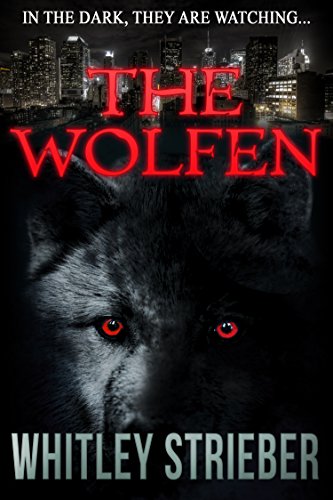
The Wolfen (Whitley Strieber, 1978)
List: Jones/Newman
George Wilson is an old, gruff, sexist police detective whose new partner is Becky Neff, strong and resilient with something to prove and damned good at her job. They have been on a hot streak in terms of closing cases for the department, but when they are given a bizarre and vicious double murder of two beat cops, all signs point to something that can’t be easily explained. This sets George especially at odds with his superiors who want to sweep it quietly under the rug and not cause a mass panic with elections coming up. The crime is filed away as a dog attack, but George and Becky know that no dog is fast or smart enough to go for the cops’ guns before they can even manage to get them out of their holsters. After more murders, the commissioner begrudgingly puts Wilson and Neff on a special detail to track down whatever is brutally killing (and sometimes eating) people in the middle of New York City. Unfortunately for Wilson and Neff, this puts them straight in the crosshairs of The Wolfen who can’t risk their secret getting out.
Between this and some other works I’ve read by Strieber, I am even more exasperated that he chose to go full bore writing about ridiculous conspiracy nonsense ever since his “alien abduction” experiences that Communion was based on. Strieber knows how to tell a fun, fast-paced story with likable (if a bit one-dimensional) characters and a legitimately interesting premise. The idea of werewolves being not transformed humans but another species altogether is a very good one and works quite effectively, particularly in the chapters where we see the story from the Wolfen’s perspective. It is a bit predictable in places, and the idea that a whole separate species has been snacking on humans for hundreds of years and no one has really noticed is a little far fetched. But if you can suspend disbelief, you’ll find yourself settling in for a brisk and enjoyable mix of wise-cracking police procedural and primal horror.
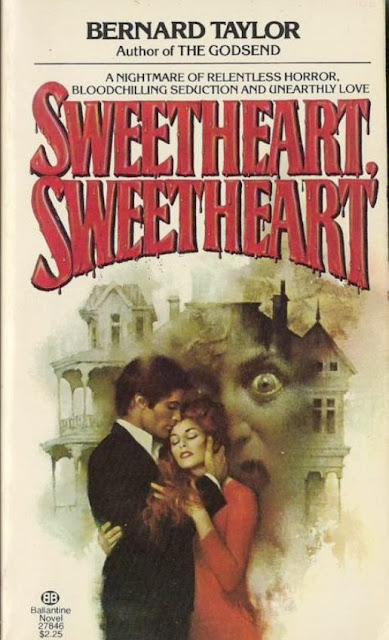
Sweetheart, Sweetheart (Bernard Taylor, 1977)
List: Jones/Newman
David is an English fellow who has been living in New York City for some time with his girlfriend Shelagh until the untimely death of his twin brother Colin brings him back to a small British town to settle his affairs. He discovers that not only had Colin died tragically (in a bizarre car accident right outside his cottage) but that Colin’s new wife Helen has also died in a terrible accident falling off the roof just a few weeks before. As Colin grows more accustomed to the cozy cottage and the cheery, simple folk of the village (like the frumpy but eager-to-please house helper Jean and the town doctor), he begins to delve into the history of the town and the mysterious string of deaths and crime that have plagued the area through the years. Eventually he begins to feel a presence in the house, a presence that wants him all to itself in the most intimate of ways. This is particularly bad for Shelagh who comes to visit David and who seeks to pull him away from the spirit which dwells in the house. Who is this vengeful and lusty spirit? Will David be able to escape? Will he even want to?
This one was chosen by Charles L. Grant for the Stephen Jones/Kim Newman 100 Best Horror Books list, and it’s easy to see why. The book shares many similarities with Grant’s style of nuanced, slow burn horror. In fact, the supernatural elements of the story really don’t even show up in a significant way until about halfway through the book. There were times early going that it wasn’t even clear if anything supernatural was even happening. But slow but surely, a palpable air of mystery and a creeping dread begins to seep into the narrative, culminating in a satisfying eerie ghost story. Even before getting to the ghost story, Taylor makes it a point to really build David’s character and the people around him, making you truly care for what happens to David. Some of the townsfolk do feel a little on the one-dimensional side but the way that the history of the town is revealed slowly peels away that shallow character read like layers of an onion, giving several denizens of the community more depth than they initially seemed. Overall, I thought this was quite a solid read with a very touching emotional through-line.
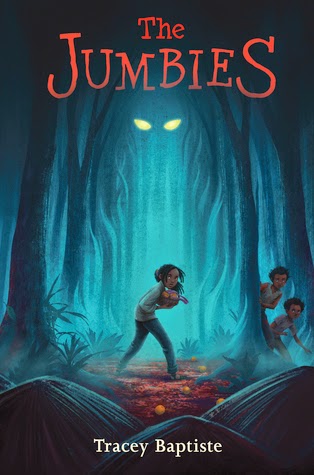
The Jumbies/Rise of the Jumbies (Tracey Baptiste, 2015/2017)
List: NPR
Corrine lives with her father on an island in a community steeped in folklore and superstition. But Corrine doesn’t believe the stories and isn’t afraid of anything, least of all the supposed umbies that live in the forest near her house. So when some jerks at school tie her dead mother’s cherished necklace to an agouti (a large rodent kind of like a capybara), Corrine has no qualms chasing into the forest. The problem is that, when Corrine leaves the forest, something follows her… The second book Rise of the Jumbies follows the chaotic events of the first book and finds Corrine and friends getting mixed up with water jumbies and mermaids in an effort to rescue the town’s lost children and confront a familiar threat.
This fantasy adventure series with a touch of horror and steeped in West Indies folklore is a fun and rollicking good time for the young adult crowd it’s aimed at. Baptiste writes with a brisk pacing and a strong imagination, and the books are at their most effective when playing up the witchy folk horror elements of the stories. The first book may conjure up some mild thrills for the younger set but I doubt any adult will find anything remotely scary within the pages. The second book even less so as it jettisons much of the horror element in favor of heightening the fantasy with sassy mermaids. While it does introduce some additional characters from traditional folklore like Mama D’Leau (who reminded me a lot of Ursula from Disney’s The Little Mermaid but with a little more of a chaotic neutral temperament rather than actively evil all the time), I just didn’t find the narrative itself as engaging. Nearly half the book is taken up with a misdirection fetch quest that only small portions of actually come into play later in the book. I read the first book with my son, and he didn’t seem to really get into it (not surprisingly, he’s enjoying Baptiste’s Minecraft book The Crash a lot more). Overall, Baptiste’s Jumbies seems like a decent series for the YA crowd, but grown horror hounds will probably be left wanting.
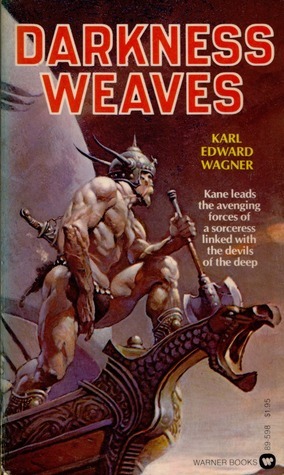
Darkness Weaves (Karl Edward Wagner, 1970)
List: Jones/Newman
Kane is a ruthlessly intelligent and brutally vicious warrior who is rumored to have been alive for hundreds of years, a legend before his time, a red-headed demon with an unquenchable blood thirst and a lust for power. Efrel is a former mistress of a king, once beautiful but betrayed by her former lover and rendered hideously deformed and quite mad. She has harnessed dark forces and black magic in a bid to seek a sweeping revenge on the king and kingdom that spurned her, recruiting Kane as the man to lead her army to victory and destroy utterly those who brought humiliation and degradation upon her. Unbeknownst to her, Kane is devising his own plans, but even Kane doesn’t hold all the cards in this action-packed tale of violence, magic and madness that will leave the dead outnumbering the living.
With Kane, Wagner certainly owes a debt to Robert E. Howard’s Conan novels. But what Wagner has done is take Conan’s violent barbarism and fused it with a sinister craftiness and placed him in a pitiless and nihilistic world where no one can be trusted and everyone is in it for themselves. This is a book filled with despair and anger and pain. Kane is no hero. I’d be hard-pressed to even consider him an anti-hero. Kane would be the straight up master villain in any other novel, bringing ruin to the fair at heart without remorse. But Wagner wisely gives us someone even more unhinged and savage than Kane to contend with, forcing our loyalties to side with a devil. While this is much more a dark fantasy than a straight up horror, the sheer bleak death oozing from its margins and the dark sorcery at play certainly give it horror embellishments. Plus both outright horror and dark fantasy have a common ancestry in the pages of Weird Tales magazine (for which the aforementioned Robert E. Howard was a significant contributor). If you are looking for an action-packed book of back-stabbing, slaughter, skullduggery and black magic, this should be right up your alley.

